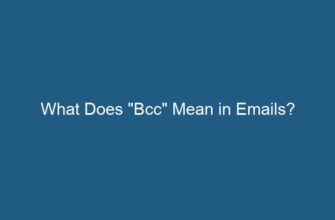In the world of networking, there are several protocols that are used for various purposes. FTP (File Transfer Protocol) and Telnet are two such protocols that have been widely used for decades. While both FTP and Telnet are used to facilitate communication and data transfer over a network, they serve different purposes and operate in different ways. In this article, we will explore the differences between FTP and Telnet, their features, functionalities, and use cases.
1. FTP: File Transfer Protocol
FTP is a standard network protocol used for transferring files between a client and a server on a computer network. It was developed in the 1970s and has since become one of the most widely used protocols for file transfer. FTP uses a client-server model, where the client initiates a connection to the server and requests file transfer operations.
1.1 FTP Features
FTP offers several features that make it a popular choice for file transfer:
- Authentication: FTP supports various authentication methods, including username and password, public key authentication, and anonymous access.
- File Management: FTP allows users to perform various file management operations such as listing directories, creating directories, renaming files, and deleting files.
- Transfer Modes: FTP supports both ASCII and binary transfer modes, allowing for the transfer of different types of files.
- Resume Support: FTP supports resuming interrupted transfers, which is useful when transferring large files.
- Passive and Active Modes: FTP can operate in passive or active mode, depending on the network configuration and security requirements.
1.2 How FTP Works
FTP works on the client-server model, where the client initiates a connection to the server using TCP/IP. The client sends commands to the server to request file transfer operations. The server responds to these commands and performs the requested operations. FTP uses two TCP connections during a session:
- Control Connection: The control connection is established between the client and the server to exchange commands and responses. It is used to authenticate the client, negotiate the transfer mode, and manage the file transfer operations.
- Data Connection: The data connection is used to transfer the actual file data between the client and the server. It is established separately for each file transfer operation.
FTP supports both active and passive mode for data transfer. In active mode, the server initiates a data connection to the client, while in passive mode, the client initiates the data connection to the server. The choice of mode depends on the network configuration and security requirements.
2. Telnet
Telnet is a network protocol used for remote login and interactive communication with a computer over a network. It allows users to log in to a remote computer and access its resources as if they were physically present at the remote location. Telnet was developed in the late 1960s and has been widely used for remote administration and troubleshooting.
2.1 Telnet Features
Telnet offers several features that make it a useful tool for remote login and administration:
- Remote Login: Telnet allows users to log in to a remote computer and access its command-line interface.
- Interactive Communication: Telnet provides a means for users to interact with remote applications and services, just as if they were using them locally.
- Session Management: Telnet allows users to create and manage multiple sessions with different remote computers.
- Security: Telnet supports various authentication methods, including username and password, to ensure secure access to remote systems.
2.2 How Telnet Works
Telnet works on the client-server model, similar to FTP. The client initiates a connection to the server using the Telnet protocol. Once the connection is established, the client can send commands and receive responses from the server. Telnet uses TCP/IP for communication.
When a Telnet client connects to a Telnet server, the server presents the user with a login prompt. The user enters their credentials, and upon successful authentication, gains access to the remote system. The client can then interact with the remote system by sending commands and receiving responses.
Asake – Introduction (Official Visualizer)
3. Differences between FTP and Telnet
While both FTP and Telnet are used for communication and data transfer, there are several key differences between the two protocols:
- Purpose: FTP is primarily used for file transfer operations, whereas Telnet is used for remote login and interactive communication.
- Connection Establishment: FTP uses two TCP connections (control and data connections) for each session, while Telnet uses a single TCP connection.
- Authentication: FTP supports various authentication methods, including anonymous access, while Telnet requires user authentication.
- Transfer Modes: FTP supports both ASCII and binary transfer modes for files, while Telnet is used for interactive communication and does not involve file transfer.
- Port Usage: FTP uses port 21 for the control connection and dynamically assigns a port for the data connection. Telnet typically uses port 23 for communication.
- Security: FTP does not provide built-in encryption, making it vulnerable to eavesdropping, while Telnet can be encrypted using protocols like Secure Shell (SSH) for secure communication.
4. Use Cases
FTP and Telnet are used in different scenarios based on their respective functionalities:
4.1 FTP Use Cases
FTP is commonly used in the following scenarios:
- File Transfer: FTP is used for transferring files between a client and a server. It is widely used by web developers to upload files to web servers, by organizations to exchange large files, and by individuals to share files.
- Website Hosting: FTP is used by website hosting providers to allow users to upload and manage files for their websites.
- Backup and Recovery: FTP can be used for backing up files to a remote server or retrieving files from a backup server.
4.2 Telnet Use Cases
Telnet is commonly used in the following scenarios:
- Remote Administration: Telnet is used by system administrators to remotely manage and troubleshoot servers and network devices.
- Command-Line Access: Telnet allows users to access the command-line interface of remote systems and execute commands.
- Remote Access: Telnet is used by users to remotely access resources and services on a network.
Conclusion
In summary, FTP and Telnet are two distinct protocols used for different purposes in the realm of networking. FTP is primarily used for file transfer operations, offering features such as authentication, file management, and transfer modes. Telnet, on the other hand, is used for remote login and interactive communication, allowing users to access remote systems and execute commands. While both protocols have their own set of use cases, it is important to understand their differences and choose the appropriate protocol based on the specific requirements of the task at hand.










